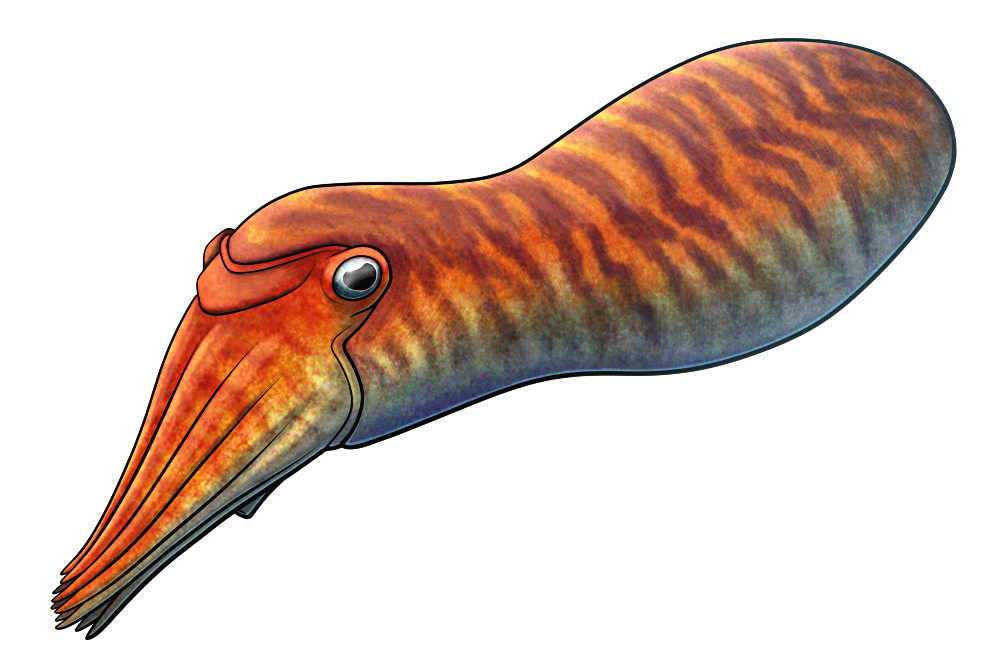Although the only nautiloids living today have characteristic tightly coiled shells, earlier in their evolutionary history these cephalopods were much more diverse.
And Glossoceras gracile here is an example of one of the more unusual groups of nautloids: the ascocerids.
Living during the Late Silurian, about 422 million years ago, in wheat is now Gotland, Sweden, Glossoceras was only around 5cm long as an adult (~2″). Like other ascocerids it started out its life looking like a fairly standard early nautiloid, with a long straight shell that curved slightly upwards, but as it approached maturity things got weird – the front part of the shell grew out into a much more bulbous flask-like shape, and the old juvenile section broke off entirely.
The gas-filled buoyancy chambers of its adult shell were positioned directly above its body chamber rather than behind like in other nautiloids, giving it very good stability in the water. The shell walls were also very thin and lightweight, which would have made it a much more maneuverable swimmer.

